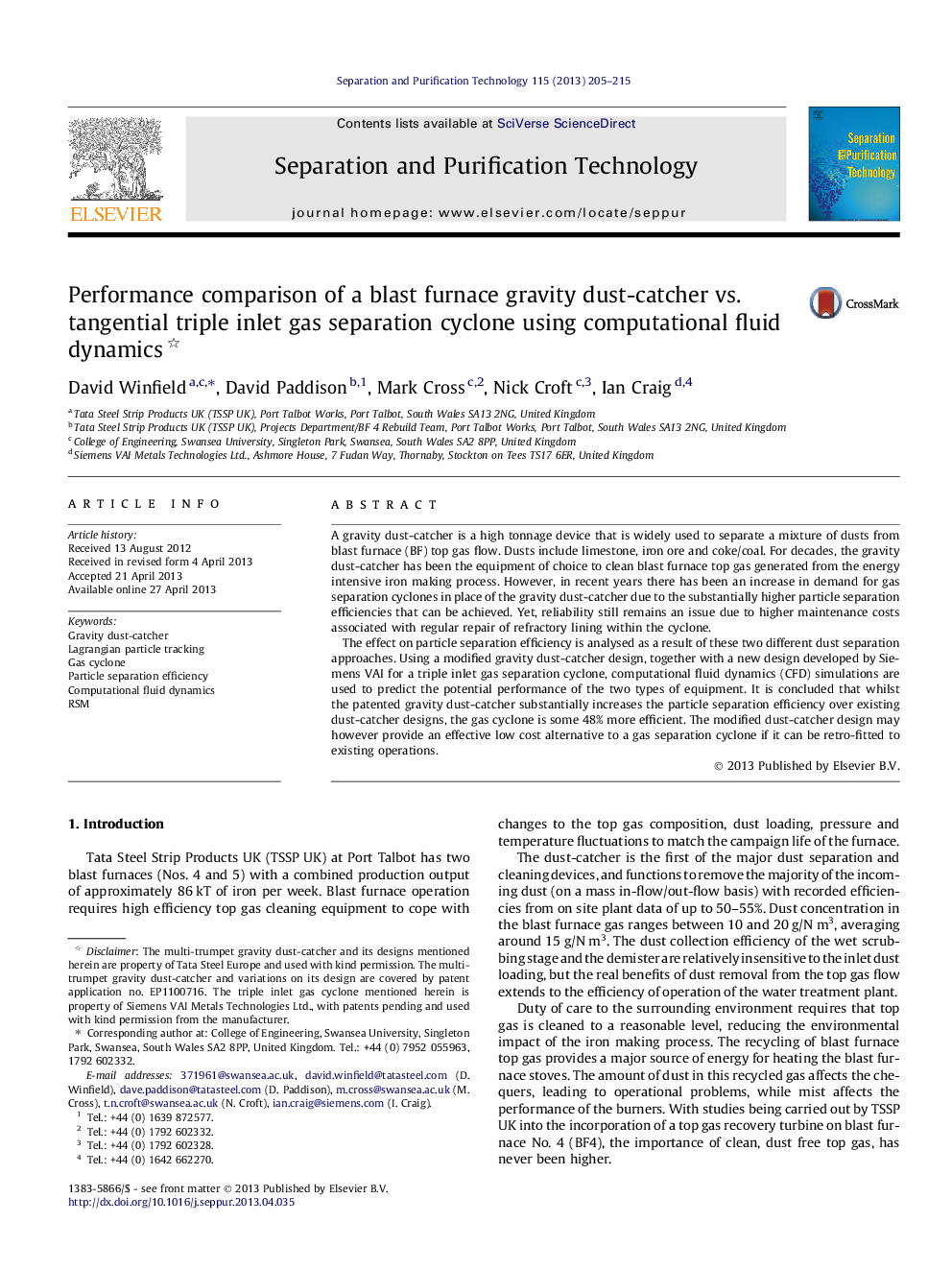| Article ID | Journal | Published Year | Pages | File Type |
|---|---|---|---|---|
| 641598 | Separation and Purification Technology | 2013 | 11 Pages |
•A case has been put forward for using a gas cyclone with a blast furnace gas plant.•A patented dust-catcher has been provided as a low cost alternative to a cyclone.• A gas cyclone has been shown to be extremely efficient at separating dust from gas.
A gravity dust-catcher is a high tonnage device that is widely used to separate a mixture of dusts from blast furnace (BF) top gas flow. Dusts include limestone, iron ore and coke/coal. For decades, the gravity dust-catcher has been the equipment of choice to clean blast furnace top gas generated from the energy intensive iron making process. However, in recent years there has been an increase in demand for gas separation cyclones in place of the gravity dust-catcher due to the substantially higher particle separation efficiencies that can be achieved. Yet, reliability still remains an issue due to higher maintenance costs associated with regular repair of refractory lining within the cyclone.The effect on particle separation efficiency is analysed as a result of these two different dust separation approaches. Using a modified gravity dust-catcher design, together with a new design developed by Siemens VAI for a triple inlet gas separation cyclone, computational fluid dynamics (CFD) simulations are used to predict the potential performance of the two types of equipment. It is concluded that whilst the patented gravity dust-catcher substantially increases the particle separation efficiency over existing dust-catcher designs, the gas cyclone is some 48% more efficient. The modified dust-catcher design may however provide an effective low cost alternative to a gas separation cyclone if it can be retro-fitted to existing operations.
